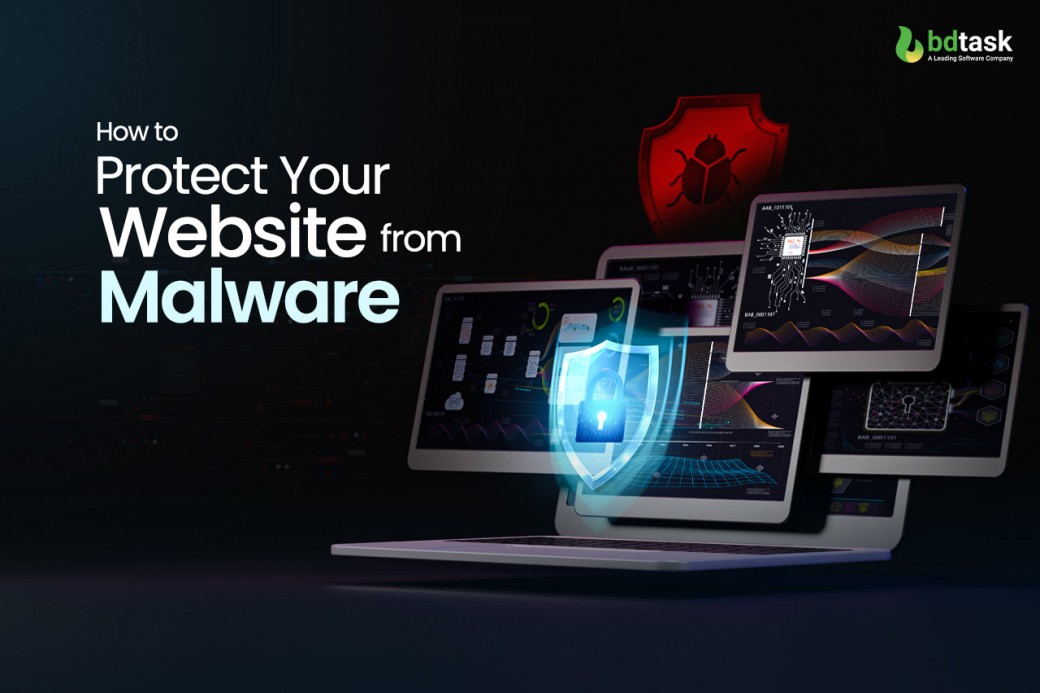How to Protect Your Website from Malware & Threats Automatically

It is important to get an idea of how to protect your website from malware. Imagine waking up, opening your website, and seeing it replaced by a scammy-looking page you’ve never seen before. Or worse, a customer tells you their antivirus flashed a warning when visiting your site. That sinking feeling is real, and it’s what malware does.
Malware is like a silent burglar. It sneaks in when you're not looking, hides in your files, and quietly steals information or damages your site. For small businesses, this isn’t just annoying; it can mean lost sales, lost trust, and even penalties from search engines.
But for anyone running a big website, the threat is a bit bigger. It's not just about a slow machine. It’s about losing customers, trust, and sometimes even your whole business. That’s where malware protection comes in.
In these notes, we are getting to learn how to protect your website from malware and all the details around it.
So stay tuned and learn.
What Is Malware?
Malware is short for malicious software. It includes things like viruses, trojans, spyware, and ransomware. In simple terms, it’s any software that’s made to harm your website, your visitors, or your data. If your website or any pc, laptop is attacked by malware, then there might be some reasons, including:
- Intelligence and intrusion
- Disruption and extortion
- Destruction or vandalism
- Steal computer resources
- Sells your organisation's intellectual property
What Is Malware Protection - Definition & Examples
Now, if we define what malware protection is, then it stands like malware protection is what helps you stop that from happening. It's like having a security guard for your website. One that never sleeps, never takes breaks, and is always on the lookout for trouble.
One of my friends once ran a local bakery and used a simple website to take orders. One morning, customers started complaining about weird pop-ups and links on her site. Turns out, her site had been infected for days. It took a week to clean up, and she lost valuable business in the process. When most people think of viruses, they usually picture their computers slowing down or their phones acting weird. But if she had malware protection, or if she had any idea about how to protect your website from malware, then none of this would have happened.
What Happens Without Protection
Not having malware protection is like leaving your front door open all night. You might get lucky for a while, but sooner or later, someone is going to take advantage.
The cleanup process without protection is messy. You might need to hire a developer, lose valuable traffic, or even rebuild your site from scratch. Worse, your customers may stop trusting you.
A friend of mine lost access to his photography portfolio because of malware. He had no backups. He had to start from zero. That’s a lesson no one wants to learn the hard way.
Why Websites Are a Target
A lot of people assume hackers only go after big businesses. That’s not true. In fact, smaller websites are often easier targets because they usually don’t have strong security. Hackers can use them to send spam, steal customer information, or redirect visitors to other shady sites.
I once worked with a small local artist who sold handmade items through her website. She had no idea anything was wrong until customers started complaining about weird pop-ups and being sent to unrelated websites. When we looked into it, the site had been infected with malware for over a week. It was quietly doing damage without her knowing.
Types of Malware You Might Face
There are many types of malware and cyber threats in the world right now. According to a study by the University of Maryland, a cyber attack occurs every 39 seconds, translating into an average of 2,244 attacks per day. Let’s look at a few examples, just so you understand the risks:
- Redirect Malware: This one sends your visitors to other websites, often filled with ads or scams.
- SEO Spam: It quietly changes your site’s content to promote someone else’s site or product.
- Phishing: Tries to trick your users into giving up passwords or payment info by mimicking trusted pages.
- Backdoors: Creates a secret way for hackers to access your site again even after cleanup.
- Ransomware: Locks you out of your site until you pay a ransom (yes, even websites can get hit).
What Malware Protection Actually Does
Malware Protection add-on isn't just one thing. It’s a mix of tools and processes that keep your website safe. Here’s what it usually involves:
1. Scanning
This is like running a health check on your website. A good malware protection system scans your site’s files, database, and even code to check if there’s anything suspicious going on.
2. Detection
If the scan finds something that looks like malware, the system flags it. Depending on how it’s set up, it might alert you, your hosting provider, or immediately start fixing the problem.
3. Removal
The goal is not just to find the malware but to remove it. Good protection tools don’t leave you hanging. They clean up the code or remove the infected files without affecting the rest of your site.
4. Real-time Monitoring
Some cyber threats show up out of nowhere. That’s why having constant monitoring matters. It helps catch new problems as soon as they appear.
5. Prevention
This includes things like firewalls, login protection, and regular software updates. Prevention helps reduce the chance of getting infected in the first place.
What Happens When Malware Is Detected
When the system finds malware, it doesn’t panic, it acts. First, it isolates the problem so it doesn’t spread. Then it cleans the infected files by removing the harmful code. In cases where something can’t be fixed immediately, you’ll get a clear notification with steps you can take.
You also get access to a scan history. So if you’re ever curious or need a log for your developer, it’s all there. Every scan, every result, every cleanup, it’s recorded.
How to Protect Your Website from Malware - Steps to Take
Before proceeding with how to protect your website from malware, it's essential to know that malware is easy to spot. It's hidden in the background. In few signs that can help to find the malware include:
- Your site loads slowly or not at all
- Visitors report seeing strange pop-ups
- Search engines flag your site as unsafe
- You notice unknown changes in your content or links
If one of these happens of facing in your site, then it might be hacked or its from malware. But following a few steps can solve anything to face in future. So here are the solutions to that
- Install a malware protection add-on
- Scan for malware daily
- Get SSL on your website
- Update vulnerable software
- Always use strong passwords
- Implement 2FA (Two-factor authentication)
- Limit login attempts
- Set strong file permissions
- Implement security headers
- Block PHP execution
- Change security keys
- Conduct regular site audits
- Make regular backups
- Remove unused apps or files
- Keep plugins and themes updated
How Automated Scanning Works
Think of it like having a smart home security system for your site. Instead of waiting for someone to break in, it constantly monitors for threats. If anything suspicious shows up, it flags it and acts fast.
Automated malware scanning is always running in the background. It doesn’t sleep, doesn’t miss anything, and doesn’t wait for you to tell it what to do. It regularly checks your website files, databases, and system for known signs of malware. And the moment it detects something shady, it kicks into action.
With Malware Protection, for example, this happens automatically. You don’t have to log in or schedule anything manually. The scans just happen. And if something’s wrong, the cleanup starts instantly.
How to Choose the Right Malware Protection
If you’re using a managed hosting service like Cloudways, malware protection can be added with just a few clicks. It’s built to run in the background, quietly scanning and fixing problems.
Look for features like:
- Real-time scanning
- Automatic cleanup
- History logs of past scans
- Alerts and reports
- Compatibility with your CMS (WordPress, Magento, etc.)
Don’t choose a tool just because it has a long list of features. Pick one that works without getting in your way.
Key Benefits: Protect Your Website From Malware
Peace of Mind: Knowing your site is being watched over day and night is a huge relief. You don’t have to run scans or wait for something to go wrong manually.
Proactive Defence: Most malware protection systems today can detect malicious code as it’s being injected. This means your site is defended before the malware can even settle in.
No Manual Work: Set it and forget it. Once the protection is enabled, the system takes care of everything. No digging into code, no scanning plugins, no long weekends trying to fix what went wrong.
Comprehensive Coverage: Whether your site runs on WordPress, Magento, Laravel, or a custom-built CMS, the protection works. You don’t need to install different tools or change your setup.
Restore When Needed: If something does go wrong, you can restore your files, either one at a time or all at once. It’s like a built-in insurance policy.
Final Thoughts
We hope this topic on how to protect your website from malware helps you and your website from different cyber attacks and unusual malware attacks. Protecting your website from malware doesn’t have to be a stressful chore. With the right tools and right cybersecurity service, it can be something you set up once and barely think about again. Malware protection is not just a tech feature. It’s a safety net for your business. Whether you run a blog, a small store, or a client site, it keeps your online presence secure so you can focus on what you do best.
If your website matters to you, and it should, then don’t wait for a problem to show up. Take action now. Because when your site is safe, your mind is clear. And that makes all the difference.
If you’ve ever had to deal with a hacked site, you know how painful it can be. But with automated protection, you don’t have to worry about that anymore.
Your site stays clean, your customers stay safe, and you get to focus on what really matters: your business










